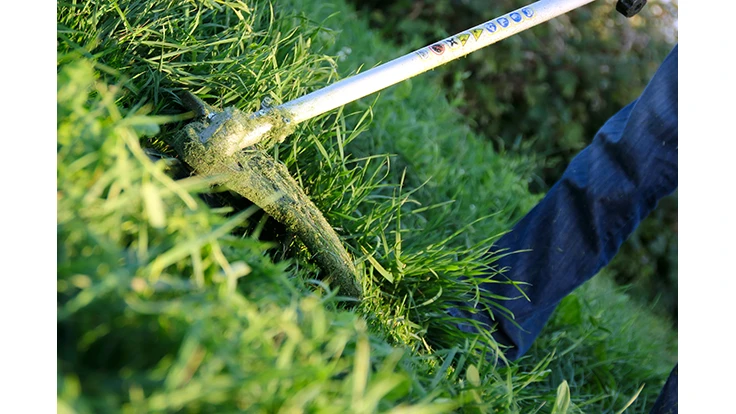
For tools like handheld trimmers and edgers, John Amarosa, director of operations at Ameriscape Services in Thonotosassa, Florida, considers the “useful life” to be about a year. Crews will continue to use the hand tools long after that point, but as they require maintenance, he starts weighing the cost against the benefits of a repair.
“If it’s a $300 piece of equipment and it has one $12 repair, sure, we’ll do that,” he says. “But if it has a repair for $75, and it’s two-and-a-half years old, we’re going to think about it.”
As Frank Capone replaces equipment at Capone Landscape in Wakefield, Massachusetts, he keeps the older units around as spares or to be used for parts. If the repair costs closer to half the value of the tool, or they can’t do the maintenance in-house, “it’ll come back in a body bag. We keep it around for parts,” he says.
As Robert Hansen’s crews at Robert Hansen Landscaping in Shelton, Connecticut, get new tools, they stencil the year of purchase onto the machine so it’s easy to tell at a glance how old it is.
“They’ll tell me that a tool broke, and I’ll say, ‘No, we just bought that,’” he says. “Then we’ll look, and it’s been five years already. Sometimes time flies like that.”
Though it isn’t a policy set in stone, Amarosa replaces about 30 percent of his handhelds every year, he says. There’s money budgeted every month to replace and repair tools if problems arise.
“But right before we hit the start of the season, we’ll budget more and get a bunch of new equipment and refresh our crew,” he says. “Then, each month after that … if we don’t use it, that money just rolls to the bottom line. But we do have it budgeted there.”
Andrew Gettig, owner of Lawnsmith Lawn & Landscape in Dallas, works without a timeframe for total fleet replacement, but he’ll look for deals with distributors to get the most out of his investment.
“Every once in a while, a distributor will run a special where everything’s 15 percent off,” he says. “At that point, if we need to buy multiple units, that’s when we would pull the trigger on that.
“For the older machines, we usually sell them. We might keep them for parts or backups if we have to. But for the most part, anything that’s taking up space is costing storage money.”
But keeping a backup can make a difference in a pinch instead of waiting for repairs.
“Every day, the guys need to get in the truck to make money. If that truck doesn’t start, you need to have another truck ready to go,” Capone says. “It’s like that all the way down to the string trimmer. Every morning at 7 a.m. for five days, those guys are ready to go. But they could need a spare trailer, a spare weed whacker, spare blowers. It doesn’t matter what it is, there’s a spare. It’s got to be reliable.”
When replacing equipment, Amarosa tries to stick to the same brands and models to reduce the amount of parts required to keep on inventory, he says. Going from brand to brand, especially through a sale, could cost less up front, but will cost more in the long run, he says.
“We found a brand and model we like for each key piece, and we try very hard not to go in any other direction,” he says.







